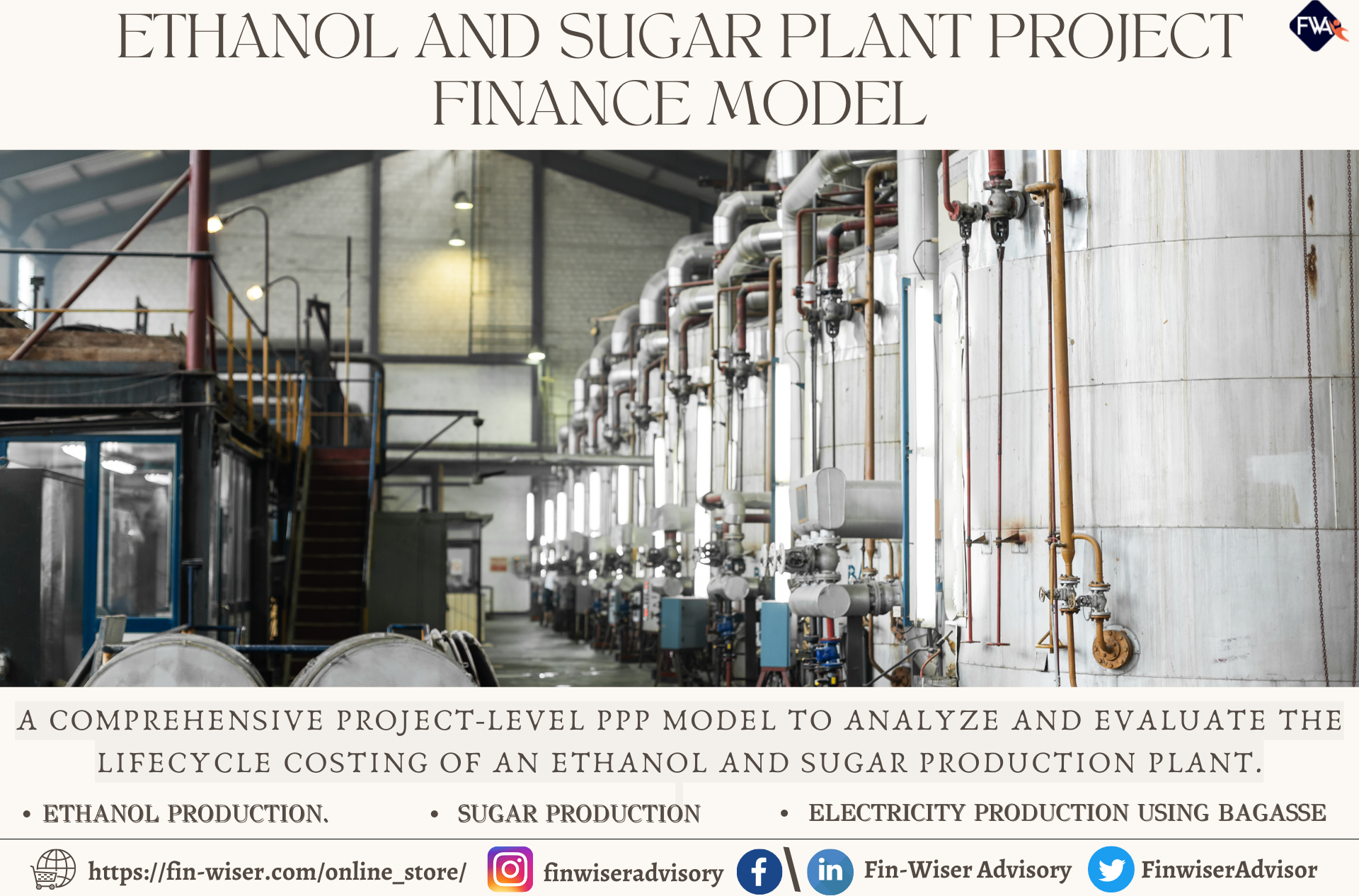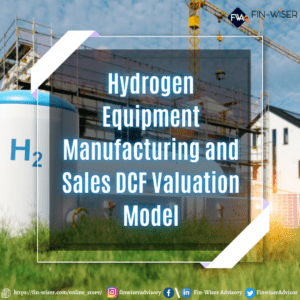Carbon Capture and Sequestration Project Analysis
The Carbon Capture and Sequestration (CCS) Project Analysis Template is an indispensable tool for businesses venturing into carbon capture, utilization, and storage (CCUS). Designed with an eye for detail, the Excel spreadsheet template offers an essential tool for analyzing the economic viability of capturing carbon emissions from a variety of industrial activities, transforming carbon into a liquid or solid state, and exploring revenue-generating avenues such as selling CO2 carbonate and building materials, store carbon in underground salt aquifers or inject the produced carbon in oil wells v by using Enhanced Oil Recovery (EOR) techniques. Furthermore, take advantage of 45Q tax credits to obtain additional revenues.

Analyzing Carbon Capture and Storage Projects
Carbon dioxide (CO2) emissions are one of the leading causes of global warming, so governments are increasingly trying to implement policies to reduce carbon emissions. One way to do this is to capture the carbon dioxide gas at the emission source and process it into a liquid or solvent state for storage or industrial use.
Unlock the future of environmentally conscious industrial processes with our state-of-the-art Carbon Capture and Sequestration Analysis Spreadsheet Template. The template was designed to help entrepreneurs, startup founders, business owners, investors, and environmental analysts understand the economics of carbon capture and sequestration projects in more detail. This comprehensive Excel spreadsheet template is your gateway to evaluating the financial viability, profitability, and environmental impact of CCS projects.
Tailored for flexibility, this sophisticated Financial Planning Spreadsheet Template in Excel allows you to model the carbon capture process using utilities such as electricity, gas, and water on an industrial scale. The model template foresees that the produced carbon can be monetized in various ways, e.g., by selling the produced carbon to the beverage Industry, as Carbonite to the construction sector, or by storing it underground. For each activity, the model allows you to define where CO2 tax credits – such as the 45Q Tax Credit in the US – can be obtained.
The spreadsheet template offers assumptions to estimate such project’s operating costs, investment costs, and obtainable debt financing facilities. It translates them into a comprehensive 40-year financial forecast, including a forecasted Income Statement, Balance Sheet, Cash Flow Statement, Financial Ratios, Free Cash Flow Forecast, and 3 years of monthly budgets.
The model comes with a variety of analyses to understand the economics of such a project in detail and calculates the relevant investment metrics such as the Internal Rate of Return (IRR), Net Present Value (NPV), Payback Period, and Funding Required. In addition, the Levelized Cost of Carbon is calculated and can be broken down via an estimated cost allocation model by stage, capture cost, transport cost, utilization, and storage costs.
The following Video provides a walkthrough of the Spreadsheet Template:
Typical Challenges of Carbon Capture and Sequestration Projects
Building a Carbon Capture and Sequestration (CCS) plant comes with unique challenges that must be navigated carefully to ensure the success and financial viability of such environmentally crucial projects. The main challenges include:
- High Initial Investment: The upfront cost of developing a CCS plant, including the necessary infrastructure for carbon capture, transport, and storage, can be relatively high, requiring a detailed financial feasibility analysis.
- Emission Source and Technology determine Costs: Costs for carbon capture plants measured in $/ton vary substantially by the type of emissions source and capture technology. In addition, carbon emissions need to be captured locally, requiring transport infrastructure such as pipelines, trucks, or ships to transport processed carbon to a storage or utilization site.
- Tax Credits (Q45): Tax credits must be secured to make carbon capture projects economically viable. Obtaining Q45 Tax Credits in the US can be cumbersome and requires compliance with detailed technical and documentary requirements. Also, tax credits vary country by country and might change again depending on government policies.
- CO2 Monetization Options: In addition to tax credits, carbon capture and storage projects will also need to study alternative sources of income, such as selling the carbon produced to the beverage or construction sector or offering a service to avoid generating CO2 emissions.
- Infrastructure and Logistics: Often, the captured carbon will need to be transported from the CO2 plant to the site of storage or utilization. This will require transport infrastructure in pipelines, storage tanks, trucks, and ships. The carbon can then be shipped to a suitable location for long-term storage, such as an underground salt aquifer. Also, other storage options are under evaluation, such as injecting carbon into oil wells to benefit from Enhanced Oil Recovery techniques. The key is to understand the cost implications of such endeavors step by step.
- Technical Risk and Uncertainty: There is a degree of uncertainty regarding the long-term effectiveness and potential risks associated with carbon storage, including potential leakage and the integrity of storage sites over time. However, this should prevent the captured and stored CO2 from ending up in the earth’s atmosphere again.
- Operational Efficiency: The CCS project must ensure that the plan can be run efficiently by using economics of scale, controlling costs, and minimizing its carbon footprint.
Addressing these challenges requires a multidisciplinary approach, combining technological innovation, financial strategies, regulatory compliance, and community engagement to implement CCS projects successfully.
Why choose the Carbon Capture and Sequestration Spreadsheet Template?
Our spreadsheet template offers an essential tool for understanding the economics of carbon capture and sequestration projects in detail. Key features include the following:
- Multiple Sources of Revenues: The template foresees obtaining income from multiple sources of revenues such as tax credits, sale of processed carbon to the beverage or construction sector, or simply charging a service fee. Simply change the assumption and compare the resulting scenarios to understand the financial implications of each alternative.
- Tax Credits: Special consideration is given to including capture and sequestration tax credits, often needed to make such projects work. In this model template, they are added to the revenues of the project.
- Comprehensive Financial Forecast: Dive into a comprehensive 40-year financial forecast, including all relevant financial statements, such as income statement, balance sheet, and cash flow statement forecast. Financial ratios, debt schedule forecasts, and free cash flow forecasts are also included.
- Financial Metrics and Key Performance Indicators (KPIs): The model calculates all relevant financial feasibility metrics, such as the Internal Rate of Return (IRR), Payback Period, Net Present Value (NPV), funding required, and the Levelized Cost of Carbon, which is broken down by the cost type or by stage – capture, transport, utilization, and storage – by using a cost allocation model included in this template.
- Scenarios: The spreadsheet model is structured into input assumptions, calculations, and outputs. By changing the assumptions, the Excel model spreadsheet allows you to simulate a variety of assumptions.
- Debt Schedule: The template includes a debt schedule that clarifies to lenders and the project’s financial sponsors how the project’s debt will be serviced and repaid.
- Sensitivity Analysis: A sensitivity analysis tells you the impact of key assumptions on the Internal Rate of Return.
- Break-Even Analysis: A break-even analysis analyzes the break-even points regarding selling price and volumes.
- Investor Perspective: The template also allows the projection of investor cash flows of up to 6 different shareholders investing in the plant and obtaining the relevant financial metrics at the investor level.
Download the free PDF Demo Version to understand the templates’ exact model structure.
The Structure of the Excel Worksheet for Capturing Carbon
This template was specifically developed to model the economics of carbon capture projects. The financial model template includes the following worksheets, which cover a forecast period of 40 years and 3 years of monthly budgets, which are all driven by the same set of assumptions:
- Terms and Abbreviations
- Executive Summary (1 Page)
- Detailed Summaries (a series of breakdowns and analysis)
- Assumptions
- Operating Model (capacity, volumes, utility consumption, pricing, revenue forecast, cost forecast, fixed asset schedule)
- Financials (Financial Statement, Free Cash Flow Forecast and Tables)
- Debt Schedule
- Monthly Budgets
- Shareholders
- Break-Even
- Sensitivity Analysis
These worksheets include all the calculations taken from the assumptions to model production capacity, carbon volumes, prices, revenues from multiple sources from utilizing or storing carbon, costs for utilities and other direct costs, operating expenses, capital expenditures, and debt financing.
Carbon Capture Projects – Going Beyond Tax Credits
Capturing carbon will become very important in the future as the reduction of CO2 will be needed to get global warming under control. The days have passed where we only modeled a few contributions from carbon capture and sequestration tax credit. Today, it is essential to understand the economics of the whole value chain – capture, transport, utilization, and storage. A flexible financial model template is needed that allows you to simulate different uses of the captured carbon and its economics.
Capturing the Economics of the Carbon Capture and SequestrationIndustry
Entering a carbon capture and sequestration project requires a solid understanding of the economics of such a project. This is where our Excel Spreadsheet Template stands out as a crucial tool for businesses and entrepreneurs. Analyzing the economic viability of startups or joint-venture projects related to carbon capture, utilization and storage becomes easier when guided through the analysis using our template. Reducing the carbon footprint through innovative technologies that allow the capture, transport, utilization, and storage of carbon dioxide (CO2) is the ultimate goal of such projects. Often, such projects require support in the form of (sellable) capture and sequestration tax credits to become economically viable.
This financial model template focuses on creating a bottom-up forecast driven by a set of assumptions for projecting capture capacity, volumes, prices, revenues, costs, and financing related to carbon capture. The forecast is then translated into a comprehensive financial statement and scenario analysis, including all the required information to understand the financial implications when setting up a CO2 capture plant.
File Types:
The financial model template is fully editable .xlsx Excel file or a .pdf Demo Version. The latest model version is 4.0.
Similar Products
Other customers were also interested in...
Distillery Financial Plan Template
This Distillery Financial Plan template prepares a sophisticated financial plan for a small distille... Read more
Business Plan for a Biodiesel Manufacturing Plant
Setting up a biodiesel manufacturing plant requires a comprehensive and executed business strategy. ... Read more
EPC Model for Builders and JV Partners
The EPC Financial Model Template for Builders and JV Partners targets to assist companies and entrep... Read more
Manufacturing Financial Model Templates Bundle
This is a collection of financial model templates in Excel for businesses in the Manufacturing indus... Read more
Ethanol and Sugar Production Plant Financial Model
Fin-wiser’s Ethanol and Sugar Plant PPP project model helps users to assess the financial viabilit... Read more
Manufacturing Company Financial Model – Dyna...
Financial Model providing a dynamic up to 10-year financial forecast for a startup Manufacturing Com... Read more
Hydrogen Gas Equipment Manufacturing and Sales Mod...
This is a very detailed and user-friendly financial model with three financial statements ... Read more
Fruit Processing Facility – 10 Year Financia...
Financial Model providing a dynamic up to 10-year financial forecast for a startup Fruit Processing ... Read more
Solar Panel Manufacturing Plant Business Plan Fina...
Get the Best Solar Panel Manufacturing Plant Financial Model. Spend less time on Cash Flow forecasti... Read more
Fashion Designer (Independent) – 5 Year Financia...
Financial Model providing a highly sophisticated 5-year financial plan for a startup Independent Fas... Read more
Reviews
Comprehensive and integrated with many financial function, excellent, i like it
17 of 20 people found this review helpful.
Help other customers find the most helpful reviews
Did you find this review helpful?
You must log in to submit a review.































